Team 31 has successfully completed its Whole Ship Preliminary Design Review (WSPDR) marking the end of the Engineering functional design phase.
Babcock say that the review provides a key indicator of the compliance, maturity and engineering risk in proceeding into Detailed Design and maturing the 3D CAD model.
“The WSPDR was the whole ship culmination event of a large number of specific reviews which addressed the maturity of the individual systems comprising the Type 31 Ship. WSPDR was held, virtually, over a period of 10 days in June, using an independent board comprising around fifteen subject matter experts, to review the design and interrogate the engineering team.
Although this was a Team 31 milestone event, attendees and contributors also came from the Authority (the UK Ministry of Defence). The independent board were impressed with the rate of progress made since contract award in November 2019, and the level of technical maturity of the design. The Engineering team in particular, and all contributors to the successful WSPDR, are to be commended for their efforts.”
Graeme Thomson, Babcock Type 31 Programme Director said:
“Completing the Whole Ship PDR is a key milestone for the Type 31 programme and signals our move into Detailed Design. I’d like to thank all involved, a lot of hard work went into achieving this positive outcome. I look forward to the next stage in this exciting and challenging programme.”




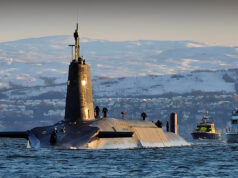
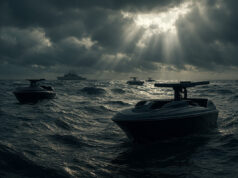
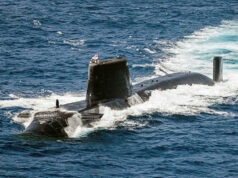

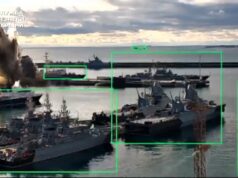
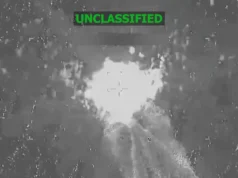
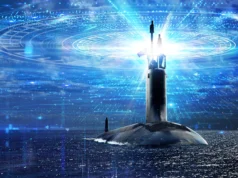

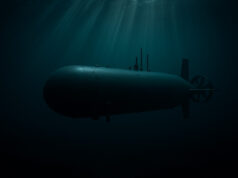

And now the goalposts start to move……………………
I think they already have moved with in service date 2027 now. I think thats realistic enough though.
I wonder if that means FFBNW has been finalised as well. I seriously hope it is not fitted with just 12 sea Ceptor, 24 was already pushing it.
Hi BB85,
I suspect you are right about the FFBNW and I agree with the 12 Sea Ceptor VLS – pathetic, but I suspect that is fixed as well, especially given the COVID recession we (and the rest of the world) is heading into.
I think the build is safe as that provides much needed politically visible jobs, but capability enhancements – not a chance IMHO.
Cheers CR
I wonder when they will release the details of what weapon/sensors/etc they will actually be fitted with.
All I have seen is what has been released in snippits. Save the RN has a few decent articles on it but with all of the changes and updates it’s hard to know what’s final and what isn’t. Hopefully they will publish the finalised detail.
@steve, they have and they’re shown in the CGI that heads the article, what mystery is left that you need help with?
Pretty much everything is still unclear. The announcements to date have been that this is what the ship could be fitted for customers, not what the Royal Navy is actually buying. If i understood the interview there was earlier this year, the CGI is not the final but just a possible fit out and the final fit out would be agreed in the contract finalisation stage which is yet to be confirmed.
You are misinformed, the CGI shows the fitout as contracted with the MoD. The contract has been signed, it is not subject to any kind of further “finalization”. Once again, are there any particulars that you are uncertain about? All the wepoans and sensors are on display in the CGI. There are no sonars below the waterline. Details on communications have not and will not be released. Propulsion system has been. What is left?
By the way the Royal Navy white ensign in the CGI might give you a clue on who the ship is for.
For me I don’t mind the FFBNW situation as long as the space and plumbing is all in place so it becomes an easy fit when money becomes available. The biggest cost and time in fitting weapons systems is when all the electricals, cooling, water feeds etc needs to be fitted or when space needs to be generated. So install everything needed for a further 12 Sea Ceptors and 16 Mk41s or A70s. then the VLS can be slotted in when they go into refit.
Hi Ron,
You have just described what FFBNW was supposed to mean, i.e. power, data and cooling trunking and space all provided and, of course sufficient power generation installed from the get go. Sadly, it seems to have been reduced to little more than a paper exercise…
Cheers CR
The QE’s catapult conversion comes to mind; supposedly catapult-ready with the wiring all done up but what instead turned out to be a bit off empty space below the deck.
Hi ETH,
FFBNW in my opinion can only work under two situations. Firstly, if you are considering fitting something that is mature and unlikely to become obsolete such as a standard VLS system, MK41 or Sylver.
The other more challenging situation is if there is something in the R&D stage that is likely to come into service during the life of the platform. This is way more difficult to assess, how many new magic wands are just 10 years away? Well within the life span of most naval platforms.
If you are thinking about the former then you should make sure there is the power, cabling, cooling and any other service required to the power grade built in or catered for in the design. If it is the latter then the only stuff you should put in place is space (steel is cheap and space is free) and services that can reasonably be expecte to be utilised for alternative upgrades.
In which case, given that EMALs was emerging as a very challenging technology limiting the FFBNW to providing space was probably the best decision that could be made at the time the decision was taken – given that was 10 years or so ago…
Cheers CR
RNZN ANZAC frigates have just been fitted with 20 sea ceptor
That shows what can be done. I look forward to the Rn revealing a plan for what they think is the ultimate goal of armament on these and other ships. If you have a plan you can go about trying to achieve it by a certain date. Like with the T45’s they need a midlife rearmament upgrade. At present they are about 60% capable.
Pathetic? what do you expect for 250 million, A single T26 comes in at over 1 billion.
HM Gov. has got an extra £150m for each T31 for some GFE.
Surely, not all of the £750m on top of the £1.25Bn is for a logistics contract?
Hi Robert,
I know, but the T26 is very high end and a lot of the cost will be in the details, for example, noise reduction tech which is a very significant cost driver. There was a significant debate on here sometime ago about the Ruby electric motor manufacturing facility that produced the ultra quiet motors for the RN’s ASW platforms. All very specialist and no doubt very expensive!
Given the T31 does not have any of the top end ASW stuff some extra VLS silos would give it a potential role in the AAW or ASuW roles.
As Meiron says, an extra £150m surely is not beyond the Governments reach, especially given the cash splashing that is going on at the moment. The £250m is too low for a warfighting frigate, but I think it will have a positive impact in terms of demonstrating that a vessel with significant ‘potential’ can be produced without breaking the bank!
Cheers CR
I think that’s the general idea with the T31, it’s unsustainable to continue spending over 1 billion for one warship, and the capabilities of the T31 can be developed overtime and need. I hope it’s a success, because if think it’s the only real way we are going to potentially see a increase in the size of the fleet if the cost is kept sensible.
Yup I agree Robert, but I think they need to plan a series of upgrades from the ‘get go’. Get the business (operational) case made for the progression agreed up front and then introduce successive upgrades inline with planned refits.
Doing it that way would help improve MoD’s long term planning which has been continuously highlighted as a failing for years…
Cheers CR
Hopefully they will, The RAF’s Typhoon has had a upgrade road map from the very start, i guess know reason why they can’t do the same with a warship.
Exactly!
Hmm… So we could have 37 T31’s then. Quite a tempting thought.
FFBNW is the military industrial complexes favourite acronym when dealing with defence departments around the World. It means squeezing more and more money after delivery of items of hardware.
That’s a naive statement Ian…. it is perfectly normal for goal posts to be moved by both sides in military projects, can you name me ANY bit of hardware, designed, designed, manufactured, tested and delivered on time, without cost overruns, changes or hiccups since WW2? I’ve thought really hard about this question and can’t think of one……..especially in the British military.
Not naive at all Stevo, however I agree with your statement about military projects. As a Senior Engineer involved with a major and somewhat controversial (on here anyway) I have a grandstand view of those pesky mobile goalposts! 😉
This is good news and impressive given that, dispite the rather minimal weapons fit, this is a complex warship. Babcock are clearly pulling out the stops on this project even in the face of COVID-19. My guess is that they are working hard to impress the MoD and lever a bigger share of the business from BAE Systems…
Cheers CR
Finally…
Been waiting for some up to date news on Type 31 ;P
Agree with other views about the need for more than 12 VLS a minimum of 24 is needed!
They will be part of the Littoral Strike Groups, Amphibious Strike Groups, and Carrier Groups(JSG)
If they are to be forward based, especially in the Gulf, Indian Ocean, Pacific then they need the flexibility in weapons
Good progress so far from November 2019 ;P
Indications from the RN so far is that they will not be part of those formations (LSG, ASG, CSG) but will be assigned to lower level taskings.
Just get a move on!
32 Sea Ceptor to 12, hmm, I know the cannon armament is potentially very capable against missiles and fast attack craft, but if it can’t throw a 15 mile AA ring around itself (with a credible number of SAM’s) and say it’s mine countermeasures task group etc, then it’s of
a somewhat limited value.
It should have a missile load out at least the same as the GP T23 or it’s a step backwards in real terms.
Let’s hope they are re equipped during refit, they certainly have the space.
Thats the result of having to be built to a very specific price,certainly not through choice.
Exactly. And you could point out the very many Type 23 GP taskings that require any kind of AA defence. Not that a capability uplift at the next refit wouldn’t be welcome. Sonar first I think.
Oops I meant to say the very many taskings that do NOT require any kind of air defence. Be nice to have an edit feature.
So what will be the differences between the 26 and the 31?
Type 26 will have a towed sonar array, it will be significantly quieter with noise damping throughout the entire ship, 24 strike length VLS, 48 Sea Ceptor and a 5 inch main gun.
Both have multi mission bays but Type 26 will be much larger and more flexible.
Type 31 will have no towed sonar, limited noise damping, no VLS, 12 Sea Ceptor and 57mm man gun.
One is a war ship and the other more of an ocean going patrol ship.
Thanks for the reply.
Great, I hope we make lots of the 26. I think Au, NZ and CA navies are already looking to purchase some of them. Am I right in believing they will also be fitted with the hypersonic cruisemissile Perseus? We may have a ship that can take out other ships, a new era of surface ship jousting.
I can’t really justify the 31 in my own mind. It seems if there was a war, it would play a logistics role more than anything. It’s not meant to take on anything surely? Perhaps provide a platform for reconnaissance, resupply and transport?
The original plan was 13 type 26, but the cost of them ended up at over 1 billion pounds each and couldn’t be justified. The Type 31 is aimed at coming in at about 250-300million£.
(It should be noted that neither the Type 26 nor the Type 31 currently has any anti-shipping missile due to Harpoons OSD date, so in theory if a new system is aquired Type 31 can have it bolted to it’s deck in cannisters like the Type 23 has).
Point being the way to justify the Type 31 is it’s 5 Type 31’s and 8 Type 26’s or 9 Type 26’s. And given the RN’s size I think we should be greatful for every surface combat ship we get. Bear in mind that the 5 Type 23’s the 31’s are replacing didn’t have towed sonar arrays either, so a lot of the very expensive noise dampening would go to waste on further Type 26 hulls.
As for in a War… a Type 31 with say 8 Cannister Launched ASM, 12 Sea Ceptor, 2x 40mm + 57mm with Smart Munitions still can be very useful, not everything on the high seas is a high end destroyer or Frigate, even in an all out war. But of course we’re not in an all out war, we fight a lot of low end wars/conflicts against non-state actors and staring matches against rogue states.
You can make a good case that 2x40mm and a 57mm are better for example against Iranian fast boat swarms, than a 5inch+strike length VLS.
As for Logistics, Resupply and Transport. Not really. It’s a Light Frigate with a mission bay that can fit 4x20foot containers, that’s good for small things like containerised minesweeping gear (if we can develop that), or something like an SF command centre, or putting initial humanitarian supplies (eg a containerised Field Hospital) ashore, until a bigger supply ship can arrive. But it’s not great for resupplying a Carrier Strike Group (let alone it’s lack of RAS) or bringing supplies to a landed amphibious force.
No the big justification for Type 31 is a Type 26 can not be in two places at once, so you need a cheaper light Frigate that can be in one place, while the Type 26 is in the other.
“Point being the way to justify the Type 31 is it’s 5 Type 31’s and 8 Type 26’s or 9 Type 26’s” ….. in fact, technically, the RN is, in current plans, getting 5 T31s, 8 T26….AND 5 River B2s. The Rivers aren’t directly replacing any vessel, other than the leased HMS Clyde now that the River B1s are being retained.
However, the RN is slowly slicing the MCM capability to balance the books. Possibly an MCM capability for the T31 mission Bay is being considered? Or a containerised approach to the River B2s?
I mean to be fair the River B2s where intended to replace the River B1’s, and keep the Clyde in buisness… if anything the AND is the B1’s that have been retained (or recomissioned)… but yeah your point is taken.
I don’t think the RN is actively planning T31 mission bay/containerised approach to MCM. They are playing around with USV’s for MCM roles operated off motherships and if that can be a containerised package it would be a great deal since it would suddenly give the RN a smorgasboard of MCM capable vessels, ranging from Type 31 and River B2s, through Type 26’s and Bays and beyond. Baisically anything you could lash a 20foot ISO equivilent too would be a potential MCM vessel.
But yeah I don’t think there’s anything like a concrete long term plan at work here, simply a case of “there’s only so much money and somethings got to give.”
Dern, this point of yours says it all, I think: “I don’t think there’s anything like a concrete long term plan at work here”
Agree totally. If we get 5 x B2, 5 x T31 and 8 x T26, and then start reducing the FFBNW gap, then the RN begins to get more of a credible capability. There was some talk of uparming the Rivers at one point, after all. My worry is the T26 batch being reduced in the current climate.
I don’t like the talk of uparming Rivers personally. I think it’s a waste of money that could be better spent elsewhere, and makes a River worse at what it’s good at.
Similiar with the FFBNW gap, I’m fine with it because the choice will simply be FFBNW or fewer hulls.
Uparming may be the only option but tend to agree. Leave the Rivers as patrol ships and focus any spare cash on the frigate force
The other thing to point out is that the Type 31 is a big ship despite falling into the Light Frigate category thanks to it’s armament. If a war did break out and a lot of funding suddenly became available it would be relatively easy (at least compared to many other designs) to put a big VLS silo amidships and remove one of the boatbays.
Assuming there is enough forewarning to do that, yes
Ive banged on about this before. Surely it would be a relatively small capex outlay (but money spent on uk inc) to install canister brimstone / spear to provide a step change in capability to the type 31.(40km reach)
Deal w/ swarm attack at range. (attacking tanker)
Deal with corvette or frigate at range
Support special forces ashore
Take out coastal tactical targets
Doesn’t CAMM have surface targeting capability?
Potentially yes but requires software upgrade … and with only 12 CAMM!! .
Brimstone / spesr would have more punch.
Ho hum.
P
I see, thanks for the info. A sea launched Brimstone or SPEAR would seem adequate for lower intensity combat however there would need to be meaningful political will to get either of these integrated. Especially seeing as an embarked wildcat can handle the anti-shipping job itself (albeit not a constant presence).
George Royce – Simply put its the difference between Chalk and Cheese.
So, UKDJ is back. Hope you had a nice break George?
Agree with others, welcome. I’d hope for a second batch of these cheaper vessels.
I am really confused with the T31, yes the concept is a good one but some things just don’t make sense. For example the T31 is Merlin capable, why? With no on board towed array the T31 will have no idea where to send a Merlin to look for an enemy sub. The procedure is that the towed array gets a sniff and sends ou the Merlin to interigate. So for helicopters the hanger needs to be capabile for either two Wildcats or a Wildcat Apache combination. However the T31 seems to be designed for independent operations or and escort frigate much akin to the old Flower Class Corvettes, this requires a towed array, but they don’t have a towed array. So the only other way that the T31/Merlin combination works is if they work with a T26, but the T26 is for the carrier strike groups and amphib group, there is not enough of these T26s to go around. Yes a group consisting of a T26 and two T31s would be useful as a ASW group, but as I have mentioned there is not enough T26s to go around and the T31 is not quiet enough to operate in such a group.
Possibly the MOD needs to think of operating the ships the other way around with a single T26 and two T31s operating with the carrier, but then the T31 is underarmed for that role and extra 12 Sea Ceptors and two Mk41 Blocks would be needed.
So my overall conclusion is this the RN has for its future the possibility of have good platforms however there is not enough of them and the ones that they will have does not appear to carry the electronic fit or weapons fit to do the job the ships are designed for. I am almost at the point where I would agree to a reduction in the T26 numbers to 6 on the condition that the money saved would be boasted by a further billion, then invested into building 8-10 extra T31s buying Captas-4 light for half of the T31 fleet and upgrading the missile fit to 24 Sea Ceptors, 8 anti ship missiles and 2 Mk41/A70 Blocks. This would give the RN surface combat fleet 6 T45s, 6 T26s and 13-15 T31s
Okay so…
Type 31 is Merlin capable yes, it’s technicallly capable of lillypadding a chinook in fact, which to me suggests it’s less about being able to handle specifically Merlin, and instead about being able to handle any large helicopter that may enter service in the future. If you can take a Merlin on the flight deck you can take a Wildcat.
As for T31/Merlin combo, it doesn’t require a T26, please remember that not all Merlins in RN service are HM2’s. The Royal Marines operate a number of them with no ASW equipment and given the mission bay below the flight deck a big heavy helicopter may be good for humanitarian missions, or putting an Embarked Force ashore.
So yeah, Big Flight Deck is probably future proofing plus variable roles.
The Type 31 could work with the carrier for a small marginal increase in AAW warfare when it’s missiles are slaved to a Type 45, or as a protection against small attack craft, but that’s not it’s intention, nor is it intended to work with a Type 26. The RN looks like it wants to employ it in a similiar way to the Type 23’s (without tails), ie forward deployed or individual deployments and keep the Type 26’s (where possible) for protecting the CSG and GIUK Gap.
If you start adding Mk41’s the cost of a Type 31 will sky rocket, and that’s counter to the point. You straight up say there are not enough platforms for the RN, and that’s litterally the reason the RN has built the Type 31 to the standard it is at (and lets be honest here, post covid we’ll be lucky to get 6, 8 and 5).
I agree with some of your comments but as for the Mk41s causing the cost of the ship to sky rocket. A twelve module set for the US AB class costs £30 million in hardware and £50 million overall with all of its needed requirements and fit. As a T31 would have only two modules I would expect to have them fitted to all five ships for a cost of £100 million. Possibly less if the T31s have the fittings put in place so the launchers could be fitted when needed or when they go into their first refits.
I do agree that in the current situation the RN will be lucky to come away with the current numbers. Yet again they are long term investments and costs so they might be able to wither the strom. Or hopefully the contracts would be written in such a way that cancellations would be less viable.
But when the cost of the ship is supposed to be 250million£, 100£ IS skyrocketing.
100million£ even, but you know I mean that.
I know what you mean, but I think you misunderstood me, that was £100 million for the installation on five ships or £20 miilion per ship.
If it could be fitted and armed for that cost I’d eat my words but I’d put money on it not being the case (and if it was surely we should prioritize putting them on the type 45s?).
I did some checking on the Mk41 fit for the Arliegh Burkes where I came across the cost of the 12 modules which was $54 million, 33 million for the modules and the other 21 million for below deck requirements. What I did was then to use the same below deck costs for the AB and muliplied it by five and the cost of the 12 module fit this then worked out to be just under a 100 million GDP. It is possible that the below deck costs would be lower as the T31s would have only two modules per ship. As I was not sure I kept it to the AB cost.
I totally agree that the T45s should get these modules. If you think about a rifle the thing is of no use without the magazine. No one will know if the mag has bullets or not. The Mk41 is the magazine.
Now you can understand why I am confused, when you spend hundreds of millions on a combat platform why the hell the government does not arm it to do the job they were designed to do go into harms way and get out again in one peice.
Honestly I suspect your numbers are out in that case. What I meant is that if the RN can demonstrate it can buy, intigrate and arm Mk41’s for such a low price, rather than someone on the internet tell me they can. Sorry.
As for your confusion: Not really, I still don’t understand why you’re confused and your analogy really isn’t the best. If the ship is supposed to be a rifle then it has mutliple magazines, once the RN’s new Antiship missile is selected Type 31 is likely to be:
8x Heavy ASuW Missiles
12x CAMM
1x57mm
2x40mm
1x Helicopter with Martlet/stingray/whatever
That’s a very different proposal to a 5.56 rifle with no magazine attached.
You also seem very fixated on this idea that we will be in a shooting war with China and that “when” that happens everything else will stop (it won’t).
Quick question: What do you think it’s easier for the RN to add a Mk41 VLS system to an existing ship if the threat situation escalates, or do you think it’ll be easier to get new hulls built?
Then start adding in the cost of missiles to fit in the VLS. The cost of maintaining and storing them onboard and shoreside in the UK. Below decks equipment for controling and targeting the missiles.. Safety cases, additional training, software updates to command systems.
All that needs adding in. 100mil for 5 ships would rapidly become 500mil+
You are assuming that the RN gets the same price as the USN as well. They won’t. Double it at least. Donald loves a profit!!
Hi Gunbuster, True but that in some ways is a diffrent issue. All I was trying to point out is that VLS sysytem itself is not to expensive. Once you have that installed then comes the next act of missile purchase, system intergration etc.
However I started with my confusion in the roles of the T31 and T26 and started to wonder if it would be better to reduce the numbers of T26s for an increase in T31s with extra capability.
Unless you have something to go into a VLS whats the point of fitting it?
Putting MK41 into a vessel without anything to go into it means you have spent 100mil for FFBNW .
If HMG sends a T31 to a trouble spot, what is it capable of doing when it gets there? It needs something to influence events inland. A heavy expensive option such as Mk 41 VLS & Tomahawk, is too much for T31.
Perhaps a simple Israeli killer drone would do instead? I am thinking of the IAI Harop which can be launched from a ship based canister. Harop has a 35 lb warhead, a POP-250 day/night optronic payload & an endurance of six hours.
Depends what the trouble spot is.